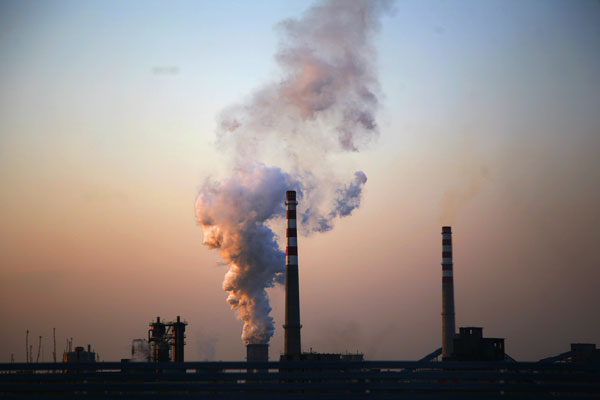China's carbon growth rate in decline: report
(Xinhua) Updated: 2015-07-14 07:37
 |
|
Smoke billows from a factory in Dezhou, Shandong province. [Provided to China Daily] |
LONDON - Despite the continued increase in global carbon emissions in China, the growth rate of carbon emissions has been "in a steady decrease" since 2005, and was near zero in 2014, according to a new climate report released Monday.
The report, commissioned by Britain's Foreign Office, was written by experts from Britain, China, the U. S. and India. It gives a detailed assessment of the progress made in reducing carbon emissions, and various threats posed by global warming.
Several factors have played key roles in bringing down the carbon growth rate in China, including better energy efficiency in major sectors, development of renewable energy, and concern for air pollution, the report said.
By the end of 2014, China's energy intensity had decreased by about 30 percent from the 2005 level, and "the national average efficiency of all power plants is now rising to among the best in the world," according to the report.
Meanwhile, China is now leading the world in investing in renewable energy, contributing a quarter of the world total, the report also said. Taking solar power as an example, experts predicted that China is likely to overtake Germany to become the largest developer of solar power in the world by the end of 2015.
Another noticeable factor is that China's concern for air pollution has helped to "set a cap for coal consumption in key regions, which will eventually extend to the whole country," according to the report.
The Chinese government is fully aware of the challenges, and is very keen to have a detailed analysis of the impact of climate change, said Prof. David King, the leading author of the report and Britain's climate change envoy.
China has recently announced its plans to cut carbon dioxide emission per unit of GDP by 60 to 65 percent from the 2005 level by 2030.
Last year, China signed a bilateral agreement on climate change and clean energy cooperation with the U. S., promising to achieve the peaking of carbon emissions around 2030, make best efforts to peak early, and increase the share of non-fossil fuels in primary energy consumption to around 20 percent by 2030.
If these goals are achieved, it opens the possibility that economies of scale will bring down the cost of non-fossil technologies, enabling them to become more widely used in the rest of the developing world, the report said.
- Delegation salutes Tibet anniversary
- Officials are told to act as anti-graft watchdogs
- Great Wall safeguarded in united action
- Vice minister pledges more efforts to improve air quality
- Beijing’s efforts to control air pollution start to pay off
- China's military committed to reform
- Netizens rip singer over baby photos
- Central govt's growing support for Tibet
- Monument to be built on Tianjin blast site
- China and Russia seal raft of energy deals







